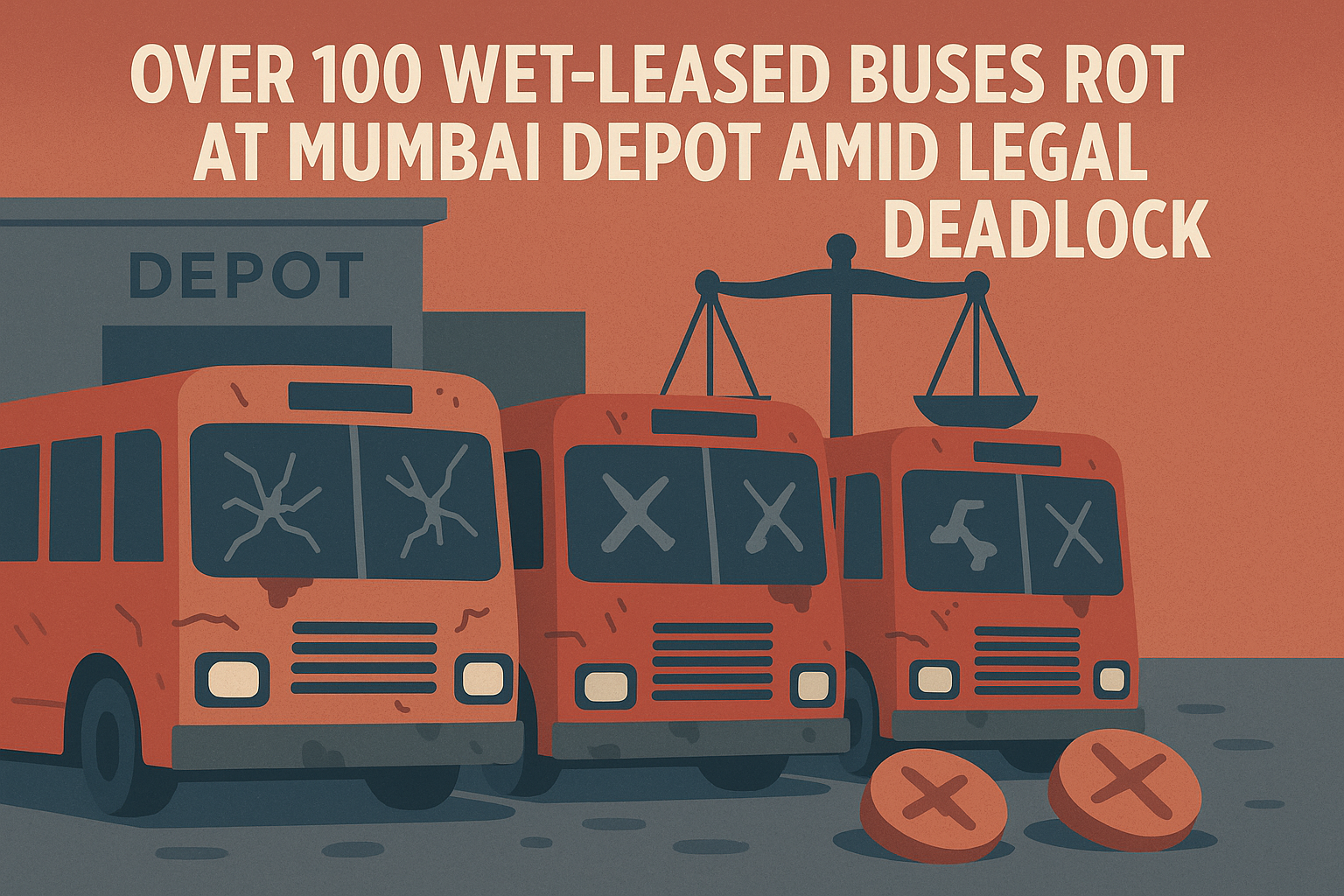
Over 100 Wet-Leased Buses Rot at Mumbai Depot Amid Legal Deadlock
Mumbai’s public transport story has always been a tale of ironies. On one hand, the city’s local trains groan under the weight of millions of daily commuters; on the other, a fleet of over 100 buses at a Brihanmumbai Electric Supply and Transport (BEST) depot sits motionless, covered in moss and weeds. The reason? A tangled legal dispute that has rendered these vehicles unusable.
A “Green Graveyard” at Anik Depot
The Anik (Wadala) depot, usually buzzing with bus activity, has now become home to a fleet of wet-leased buses that look more like abandoned relics. Vegetation has crept over the buses, turning them into an unintentional “green graveyard.” Images of the scene went viral on social media, sparking outrage and ridicule. Citizens were quick to comment on the irony of buses meant to serve commuters becoming nature’s playground.
One user joked: “Mumbai introduces foliage-powered buses—eco-friendly and leaf-covered, free of charge!” Others took a harsher tone, criticising what they saw as a waste of public resources and a reflection of poor accountability in governance.
Why the Buses Are Idle
While the buses rest on BEST land, the transport authority cannot use them. These vehicles technically belong to the Court Receiver and have been under litigation since last year. A liquidator was appointed in October 2024, and the plan was to auction the buses. However, the process stalled, leaving the fleet in limbo.
A BEST official explained the situation: “These buses belong to the Court Receiver. Since the matter is under litigation and the auction process is still pending, BEST cannot put them into service.”
This means that even though Mumbai faces an ever-growing demand for public transport, more than a hundred buses remain unusable—locked away not by mechanical faults but by paperwork and legal technicalities.
The Wet-Lease Model: A Double-Edged Sword
The wet-lease model, introduced in 2019, was designed to expand BEST’s capacity quickly without the financial burden of purchasing new buses. Under this system, private operators supply both the buses and the drivers. They are also responsible for maintaining the vehicles and managing staff, while BEST decides the routes, schedules, and fares.
In theory, the model provides flexibility and cost efficiency. BEST pays operators based on the kilometres the buses cover, ensuring that the city’s transport demands are met without heavy capital investment.
However, critics argue that this arrangement leaves the system fragile. Union leaders and transport experts have long cautioned that over-dependence on private operators dilutes accountability. The situation at Anik depot now highlights the risks: once legal disputes or contractual issues arise, buses are grounded, and the city’s commuters are the ones left stranded.
Impact on Commuters
For Mumbai, every bus counts. Local trains may carry the bulk of the city’s population, but buses are critical for last-mile connectivity and for areas not directly served by the suburban rail network. Idle buses translate into fewer services, more crowded alternatives, and longer waiting times.
The irony is hard to miss—while residents complain of overcrowded buses during peak hours, more than 100 vehicles that could have eased the load are left rusting. In a city where transport infrastructure is stretched thin, this inefficiency cuts deep.
A Call for Accountability
The viral images have reignited debate on how public transport in Mumbai is managed. Citizens are demanding more transparency, quicker resolution of legal disputes, and stronger accountability from both BEST and the civic administration. Experts also suggest that while wet-leasing may remain part of BEST’s strategy, the authority must diversify its approach to ensure that external disputes do not paralyse its fleet.
As Mumbai aspires to be a world-class metropolis with bullet trains and cruise terminals, the sight of neglected buses wrapped in weeds serves as a reminder: infrastructure is not just about building new assets, but also about managing existing ones responsibly.
For now, the buses at Anik depot remain still, trapped between the city’s urgent transport needs and the slow grind of legal machinery. And Mumbaikars continue their daily struggle, waiting for a system that moves as fast as their city does.




